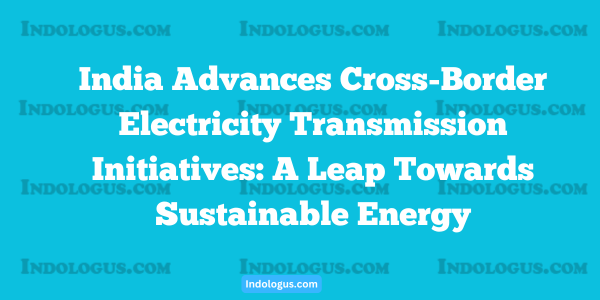India is making significant strides in enhancing its energy connectivity with neighboring nations. The country is in active discussions with Oman, the UAE, Saudi Arabia, the Maldives, and Singapore to establish cross-border electricity transmission lines. This effort is part of India’s flagship initiative, One Sun One World One Grid (OSOWOG), which was launched by Prime Minister Narendra Modi in 2018. The objective of OSOWOG is to create a globally interconnected grid that facilitates the transfer of renewable energy, positioning India as a key player in global sustainability.
OSOWOG: Revolutionizing Global Renewable Energy Transmission
The One Sun One World One Grid initiative envisions a global network of interconnected electricity grids. This system will enable the transfer of renewable energy, particularly solar and wind power, across national borders. By linking power grids, OSOWOG aims to optimise the use of energy resources and reduce dependency on fossil fuels. Through this interconnected approach, surplus energy generated in one region can be transferred to meet the energy needs of another, making renewable energy more accessible and sustainable on a global scale.
India-Oman Interconnection: A Key Step in OSOWOG’s Vision
A critical component of the OSOWOG initiative is the proposed interconnection between India and Oman. This ambitious project involves the construction of a 1,000-km undersea power cable linking the Gujarat region in India to Oman. This cable will serve as a crucial energy exchange route, enhancing the flow of renewable energy in the region and strengthening energy security for both countries.
Benefits of Cross-Border Electricity Grids
Cross-border electricity grids offer numerous advantages for participating countries. By integrating national grids, countries can better manage their renewable resources, which may fluctuate due to seasonal or geographic factors. Solar, wind, and hydro resources vary widely across regions, and cross-border sharing ensures that energy surpluses in one region can meet deficits in another. This exchange not only stabilizes regional power supply but also reduces reliance on fossil fuels, furthering the goal of sustainable energy development.
India’s Current Electricity Exchange and Future Growth
India is already engaged in electricity exchange agreements with its neighboring countries. Currently, India shares about 4,100 MW of electricity with Nepal, Bangladesh, Bhutan, and Myanmar. However, this number is expected to rise significantly, with projections indicating that electricity exchange will reach 7,000 MW by 2026-27. The expansion of interconnections between India and these nations is crucial to facilitating this growth and strengthening regional energy cooperation.
Political and Regulatory Support: The Pillars of OSOWOG’s Success
For the OSOWOG initiative to succeed, it requires strong political will and regional collaboration. Political backing from participating countries and the establishment of robust regulatory frameworks are essential to ensure smooth implementation. Governments must work together to create effective policies and mechanisms that will govern the exchange of renewable energy across borders.
Future Plans for Regional Power Connectivity
Looking ahead, India is prioritizing cross-border electricity connectivity to further its energy goals. The country is planning additional interconnections, including one with Sri Lanka. These developments will allow OSOWOG to support the region’s peak power demands by facilitating the efficient exchange of renewable energy. As India continues to lead the charge in renewable energy innovation, OSOWOG stands as a key strategy in ensuring a reliable and sustainable power supply for the region.
Conclusion: OSOWOG as a Game-Changer for Renewable Energy
India’s One Sun One World One Grid initiative is a bold and visionary project that holds immense potential for revolutionizing the global energy landscape. By fostering cross-border electricity connectivity and prioritizing renewable energy, OSOWOG promises to contribute significantly to global sustainability. As the project moves forward, it will not only benefit India but also strengthen energy security across the globe, marking a transformative step towards a cleaner, more sustainable future.
Stay tuned for further updates on India’s efforts to expand cross-border electricity connectivity and the progress of the OSOWOG initiative.




